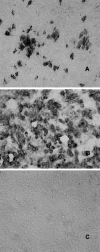Stability and inactivation of SARS coronavirus
- PMID: 15118911
- PMCID: PMC7086689
- DOI: 10.1007/s00430-004-0219-0
Stability and inactivation of SARS coronavirus
Abstract
The SARS-coronavirus (SARS-CoV) is a newly emerged, highly pathogenic agent that caused over 8,000 human infections with nearly 800 deaths between November 2002 and September 2003. While direct person-to-person transmission via respiratory droplets accounted for most cases, other modes have not been ruled out. Faecal shedding is common and prolonged and has caused an outbreak in Hong Kong. We studied the stability of SARS-CoV under different conditions, both in suspension and dried on surfaces, in comparison with other human-pathogenic viruses, including human coronavirus HCoV-229E. In suspension, HCoV-229E gradually lost its infectivity completely while SARS-CoV retained its infectivity for up to 9 days; in the dried state, survival times were 24 h versus 6 days. Thermal inactivation at 56 degrees C was highly effective in the absence of protein, reducing the virus titre to below detectability; however, the addition of 20% protein exerted a protective effect resulting in residual infectivity. If protein-containing solutions are to be inactivated, heat treatment at 60 degrees C for at least 30 min must be used. Different fixation procedures, e.g. for the preparation of immunofluorescence slides, as well as chemical means of virus inactivation commonly used in hospital and laboratory settings were generally found to be effective. Our investigations confirm that it is possible to care for SARS patients and to conduct laboratory scientific studies on SARS-CoV safely. Nevertheless, the agents tenacity is considerably higher than that of HCoV-229E, and should SARS re-emerge, increased efforts need to be devoted to questions of environmental hygiene.
Figures


References
-
- Centers Morb Mortal Wkly Rep Surveill Summ. 2003;52:241.
-
- Department of Communicable Disease Surveillance and Response (2003) Consensus document on the epidemiology of severe acute respiratory syndrome (SARS). WHO/CDS/CSR/GAR/2003.11. WHO, Geneva
MeSH terms
Substances
LinkOut - more resources
Full Text Sources
Other Literature Sources
Medical
Miscellaneous

